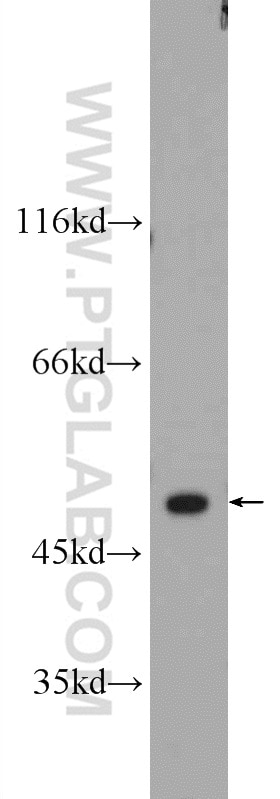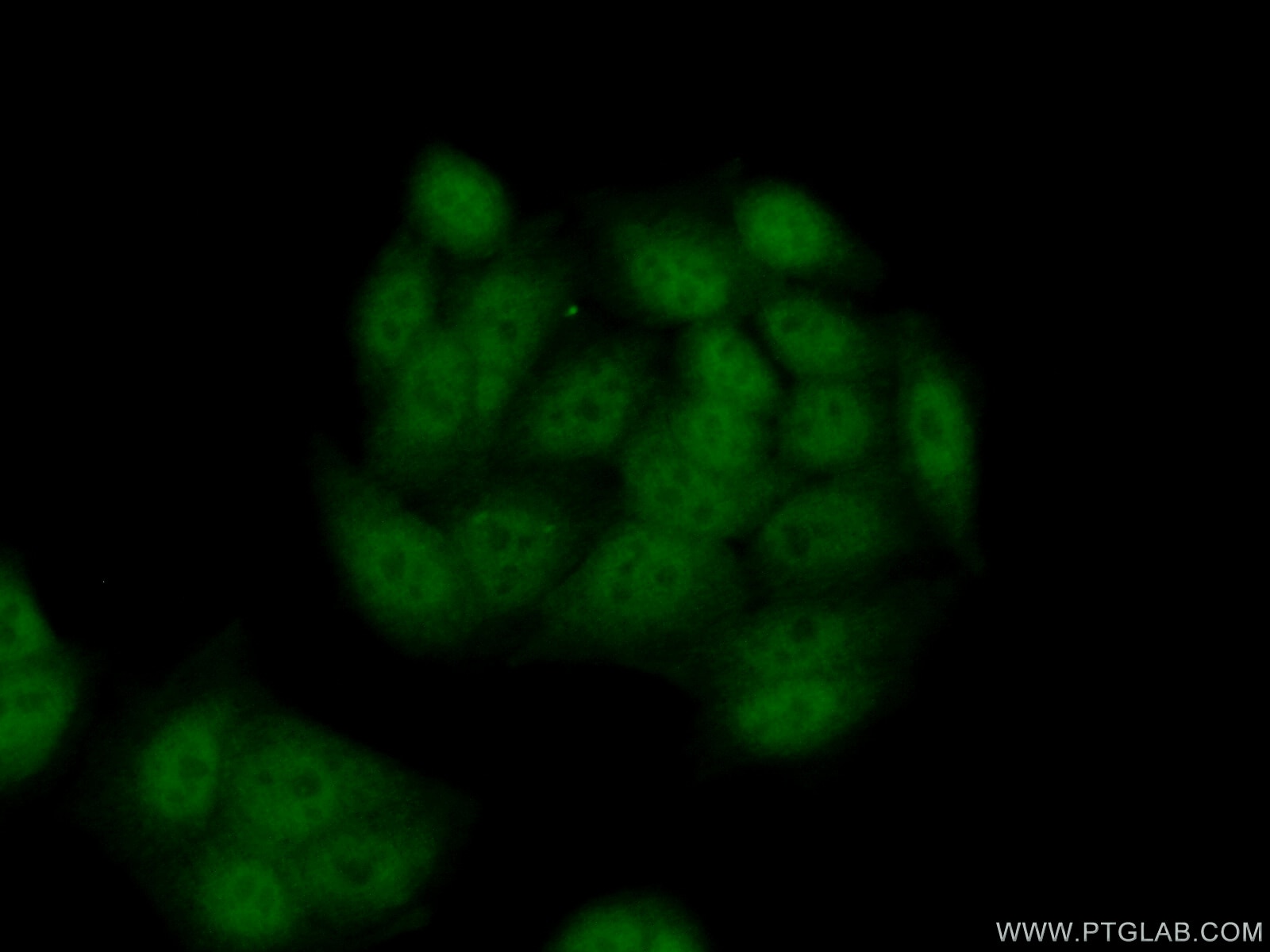- Phare
- Validé par KD/KO
Anticorps Polyclonal de lapin anti-SETD7
SETD7 Polyclonal Antibody for WB, IF, ELISA
Hôte / Isotype
Lapin / IgG
Réactivité testée
Humain, rat, souris
Applications
WB, IHC, IF/ICC, CoIP, ELISA
Conjugaison
Non conjugué
N° de cat : 24840-1-AP
Synonymes
Galerie de données de validation
Applications testées
| Résultats positifs en WB | cellules HeLa, cellules C6, cellules NIH/3T3, tissu cérébral de rat, tissu cérébral de souris, tissu rénal de souris |
| Résultats positifs en IF/ICC | cellules HeLa |
Dilution recommandée
| Application | Dilution |
|---|---|
| Western Blot (WB) | WB : 1:1000-1:5000 |
| Immunofluorescence (IF)/ICC | IF/ICC : 1:20-1:200 |
| It is recommended that this reagent should be titrated in each testing system to obtain optimal results. | |
| Sample-dependent, check data in validation data gallery | |
Applications publiées
| KD/KO | See 2 publications below |
| WB | See 6 publications below |
| IHC | See 2 publications below |
| CoIP | See 2 publications below |
Informations sur le produit
24840-1-AP cible SETD7 dans les applications de WB, IHC, IF/ICC, CoIP, ELISA et montre une réactivité avec des échantillons Humain, rat, souris
| Réactivité | Humain, rat, souris |
| Réactivité citée | Humain, souris |
| Hôte / Isotype | Lapin / IgG |
| Clonalité | Polyclonal |
| Type | Anticorps |
| Immunogène | SETD7 Protéine recombinante Ag18219 |
| Nom complet | SET domain containing (lysine methyltransferase) 7 |
| Masse moléculaire calculée | 366 aa, 41 kDa |
| Poids moléculaire observé | 48-50 kDa |
| Numéro d’acquisition GenBank | BC121055 |
| Symbole du gène | SETD7 |
| Identification du gène (NCBI) | 80854 |
| Conjugaison | Non conjugué |
| Forme | Liquide |
| Méthode de purification | Purification par affinité contre l'antigène |
| Tampon de stockage | PBS avec azoture de sodium à 0,02 % et glycérol à 50 % pH 7,3 |
| Conditions de stockage | Stocker à -20°C. Stable pendant un an après l'expédition. L'aliquotage n'est pas nécessaire pour le stockage à -20oC Les 20ul contiennent 0,1% de BSA. |
Informations générales
SET domain containing lysine methyltransferase 7 (SETD7, also called SET7/9) was the first lysine methyltransferase (KMT) discovered to specifically monomethylate lysine-4 of histone 3 (H3K4me1) (PMID: 26435321). SETD7 has been shown to have a very broad target specificity in vitro, including transcriptional regulators such as TAF10, p53, ER, p65, STAT3, Rb, Mypt, Tat, and Foxo3 (PMID: 25136132, 30013796).
Protocole
| Product Specific Protocols | |
|---|---|
| WB protocol for SETD7 antibody 24840-1-AP | Download protocol |
| IF protocol for SETD7 antibody 24840-1-AP | Download protocol |
| Standard Protocols | |
|---|---|
| Click here to view our Standard Protocols |
Publications
| Species | Application | Title |
|---|---|---|
EBioMedicine Histone-lysine N-methyltransferase SETD7 is a potential serum biomarker for colorectal cancer patients. | ||
Oncotarget SETD7 is a prognosis predicting factor of breast cancer and regulates redox homeostasis.
| ||
FASEB J SETD7 mediates the vascular invasion in articular cartilage and chondrocytes apoptosis in osteoarthriis. | ||
Exp Cell Res Proteomic analysis of DZIP3 interactome and its role in proliferation and metastasis in gastric cancer cells | ||
Med Oncol DDB1 regulates the activation-induced apoptosis of T cells via downregulating the expression of histone methyltransferase SETD7 | ||
Histol Histopathol ZKSCAN5 activates LAPTM5 expression by recruiting SETD7 to promote metastasis in pancreatic ductal adenocarcinoma |






